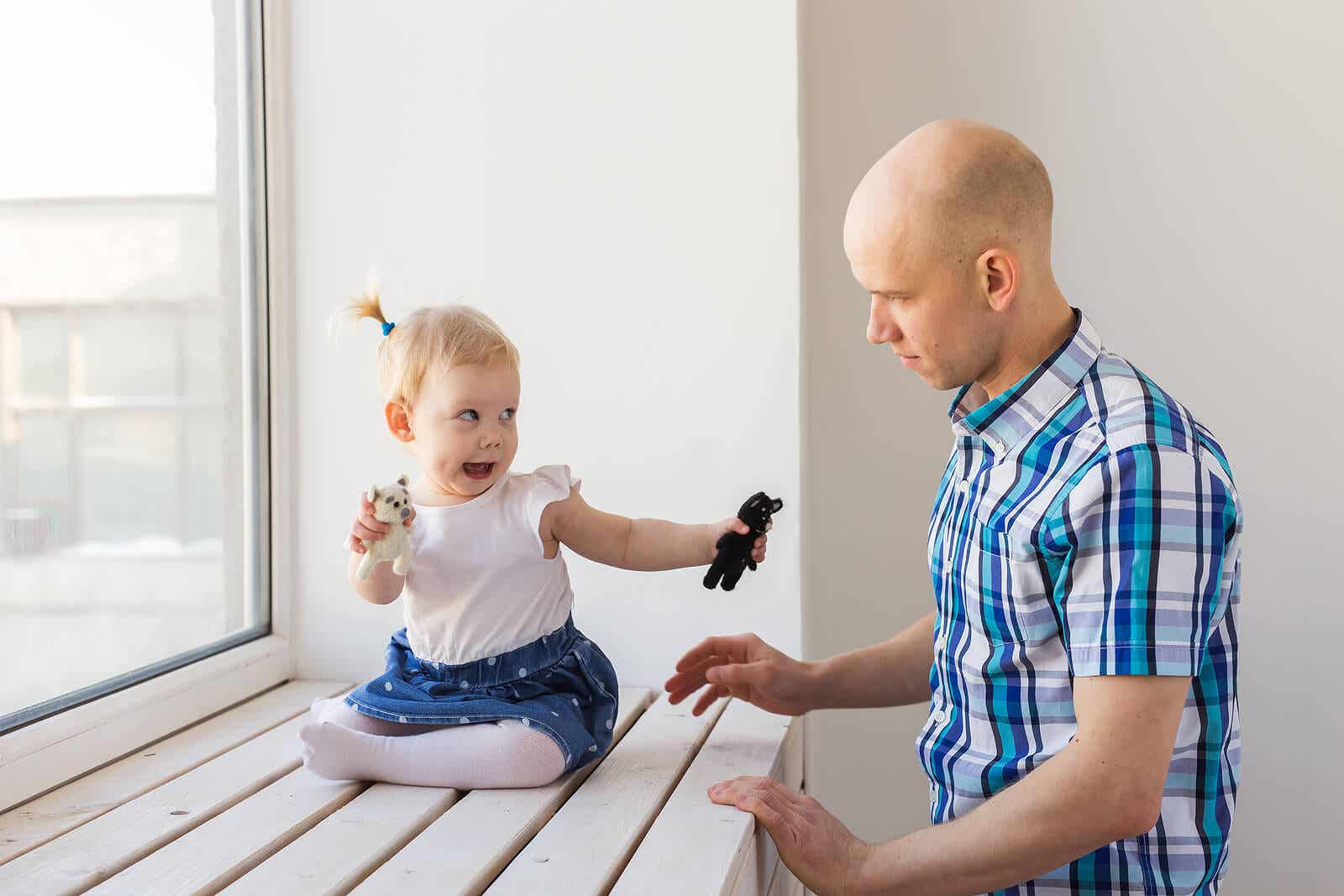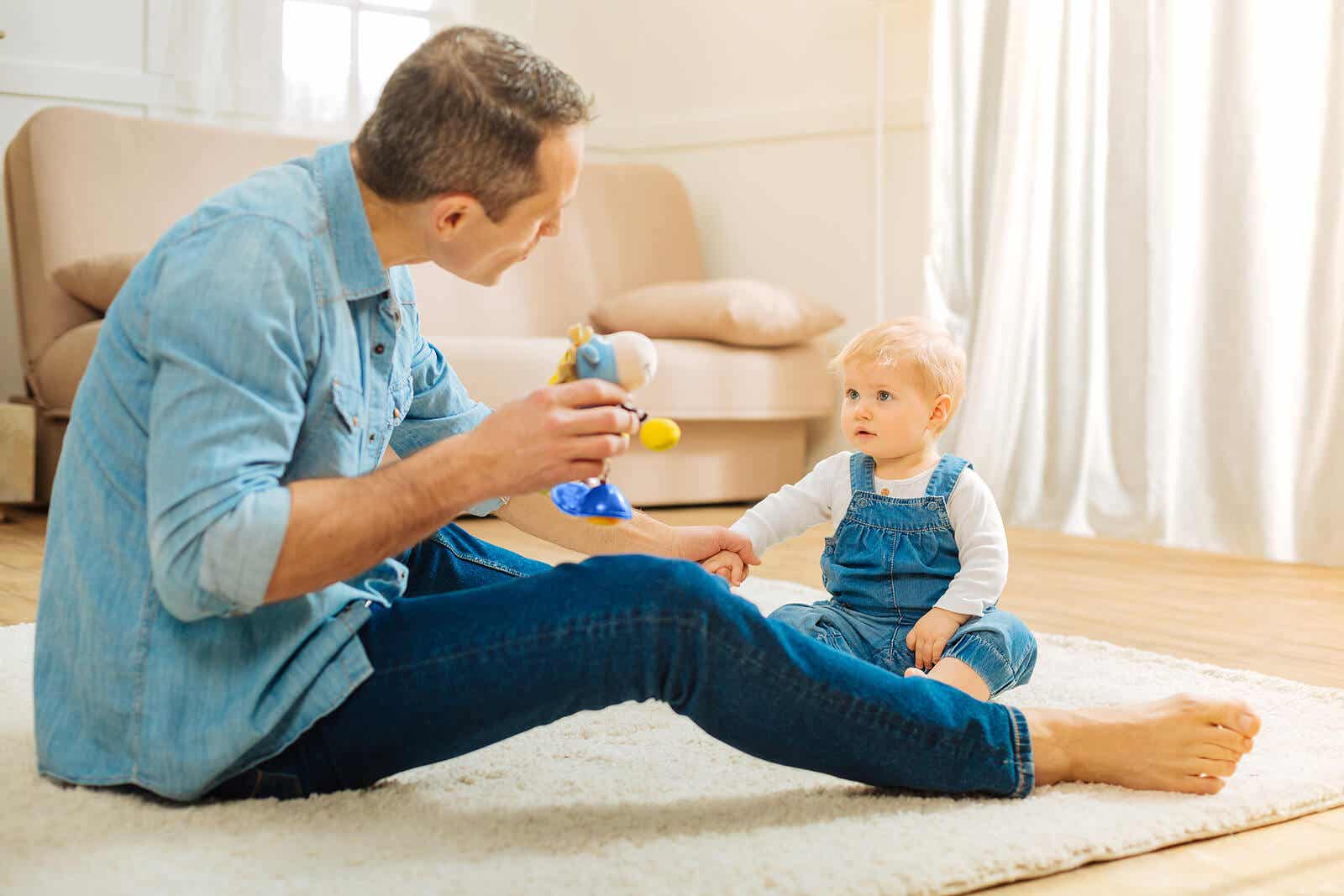Baby Signing: Communicating With Your Baby


Written and verified by the psychologist Ana Couñago
As soon as babies are born, they begin to interact with the world and the people around them. However, during the first months of life, they don’t have the ability to verbally express their wants and needs. This can be frustrating for both the little ones and their parents. But what if we told you that you can communicate with babies through signs? We’re talking about baby signing! Do you want to know more about this method? Read this article carefully.
Before addressing this topic, it’s worth clarifying that sign communication with babies is possible because they develop hand-eye coordination prior to the acquisition and production of speech. Therefore, its use is ideal with preverbal children.

What is baby signing?
Baby signing is an augmentative communication system that consists of teaching babies to express the keywords of a language through simple gestures so that they can communicate effectively with their environment before they develop the ability to speak.
From six months of age, children can be introduced to baby signing, starting with a few signs, so that they can understand their meaning and become familiar with this type of communication.
One of the first authors to disseminate this method was Dr. Joseph Garcia, who, in the late 80s, stated that it could be beneficial for children to learn, from an early age, to perform certain gestures intentionally, despite not having any hearing difficulties. So he decided to write and publish The Complete Guide to Baby Signing (La Guía Completa del Baby Signing).
In addition, psychologists Susan Goodwyn and Linda Acredolo, in the 1990s, developed the Baby Signs Program and studied the evolution and progress of a group of children who were taught this system of gestural communication.
Although many years have passed since the first research and explanations focused on communication through signs in early infancy, nowadays, it’s become popular, and more and more families are choosing to carry out this practice with their babies.
The benefits of communicating with the baby through signs
Today, we know that communication through signs doesn’t hinder or limit the acquisition of speech in young children. In fact, quite the contrary; there are many benefits of baby signing in the development of babies.

- It reduces frustration, both for the baby and their family members, who can easily understand the child’s needs without the child having to resort to crying or inappropriate attitudes.
- Stimulates the development of language and communication, both verbal and non-verbal.
- Stimulates intellectual development.
- Promotes the development of autonomy and self-confidence.
- Promotes learning by imitation and observation.
- Strengthens the bonding of children with their mothers and fathers, and promotes positive emotional development.
Baby signing for communication with your baby
Now that you know what baby signing is and what its benefits are, you should know that it’s simply an alternative method of communication and is complementary to verbal language. But at no time is its implementation considered necessary for the full development of the baby.
Although it’s highly recommended to start establishing functional communication with little ones, without having to wait for them to learn to speak. And you, what do you think about baby signing? Are you ready to try it with your baby?
As soon as babies are born, they begin to interact with the world and the people around them. However, during the first months of life, they don’t have the ability to verbally express their wants and needs. This can be frustrating for both the little ones and their parents. But what if we told you that you can communicate with babies through signs? We’re talking about baby signing! Do you want to know more about this method? Read this article carefully.
Before addressing this topic, it’s worth clarifying that sign communication with babies is possible because they develop hand-eye coordination prior to the acquisition and production of speech. Therefore, its use is ideal with preverbal children.

What is baby signing?
Baby signing is an augmentative communication system that consists of teaching babies to express the keywords of a language through simple gestures so that they can communicate effectively with their environment before they develop the ability to speak.
From six months of age, children can be introduced to baby signing, starting with a few signs, so that they can understand their meaning and become familiar with this type of communication.
One of the first authors to disseminate this method was Dr. Joseph Garcia, who, in the late 80s, stated that it could be beneficial for children to learn, from an early age, to perform certain gestures intentionally, despite not having any hearing difficulties. So he decided to write and publish The Complete Guide to Baby Signing (La Guía Completa del Baby Signing).
In addition, psychologists Susan Goodwyn and Linda Acredolo, in the 1990s, developed the Baby Signs Program and studied the evolution and progress of a group of children who were taught this system of gestural communication.
Although many years have passed since the first research and explanations focused on communication through signs in early infancy, nowadays, it’s become popular, and more and more families are choosing to carry out this practice with their babies.
The benefits of communicating with the baby through signs
Today, we know that communication through signs doesn’t hinder or limit the acquisition of speech in young children. In fact, quite the contrary; there are many benefits of baby signing in the development of babies.

- It reduces frustration, both for the baby and their family members, who can easily understand the child’s needs without the child having to resort to crying or inappropriate attitudes.
- Stimulates the development of language and communication, both verbal and non-verbal.
- Stimulates intellectual development.
- Promotes the development of autonomy and self-confidence.
- Promotes learning by imitation and observation.
- Strengthens the bonding of children with their mothers and fathers, and promotes positive emotional development.
Baby signing for communication with your baby
Now that you know what baby signing is and what its benefits are, you should know that it’s simply an alternative method of communication and is complementary to verbal language. But at no time is its implementation considered necessary for the full development of the baby.
Although it’s highly recommended to start establishing functional communication with little ones, without having to wait for them to learn to speak. And you, what do you think about baby signing? Are you ready to try it with your baby?
All cited sources were thoroughly reviewed by our team to ensure their quality, reliability, currency, and validity. The bibliography of this article was considered reliable and of academic or scientific accuracy.
- Acredolo, L. P., Acredolo, L. y Goodwyn, S. (2000). Baby signs: How to talk with your baby before your baby can talk. Random House.
This text is provided for informational purposes only and does not replace consultation with a professional. If in doubt, consult your specialist.








